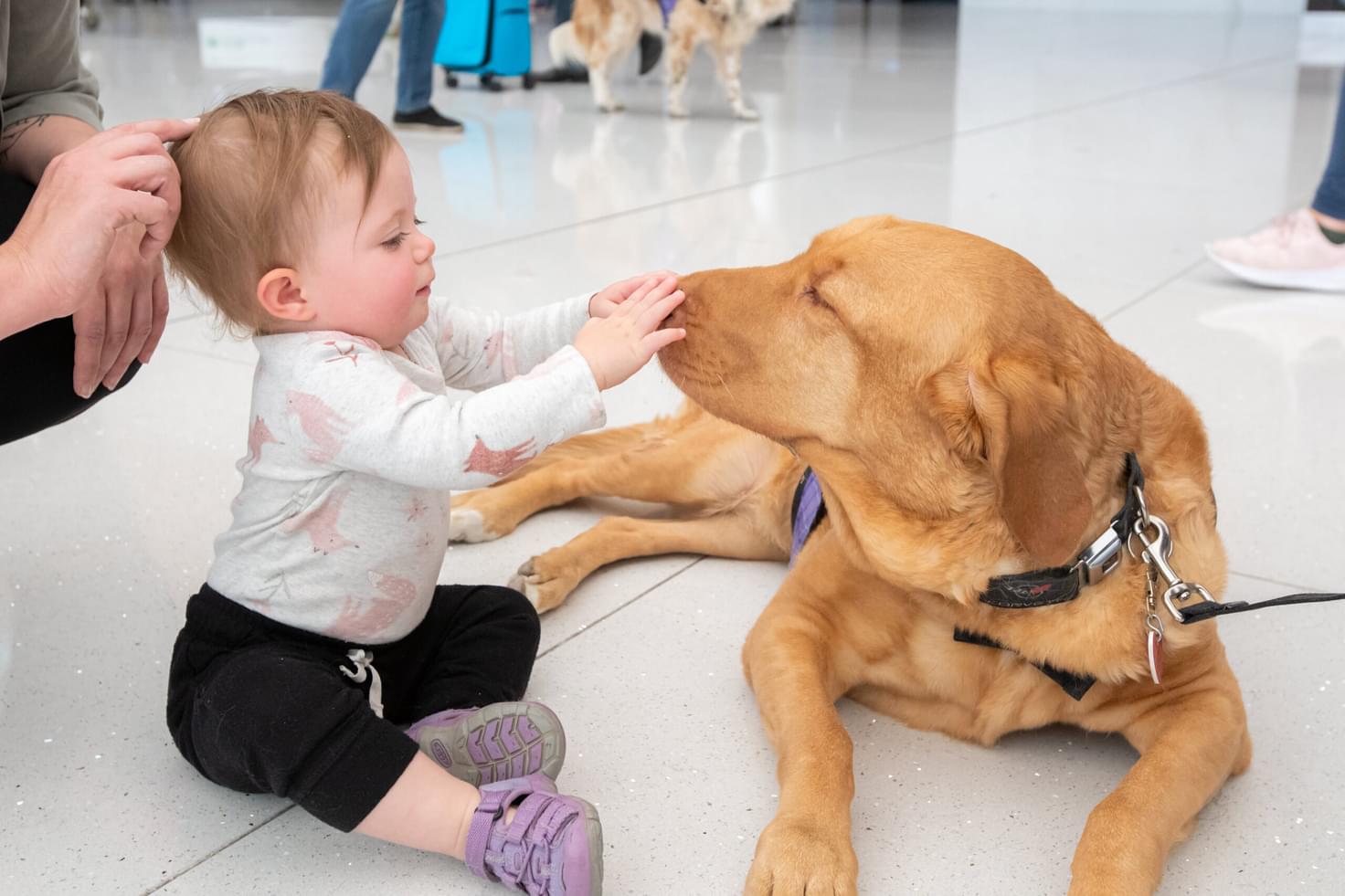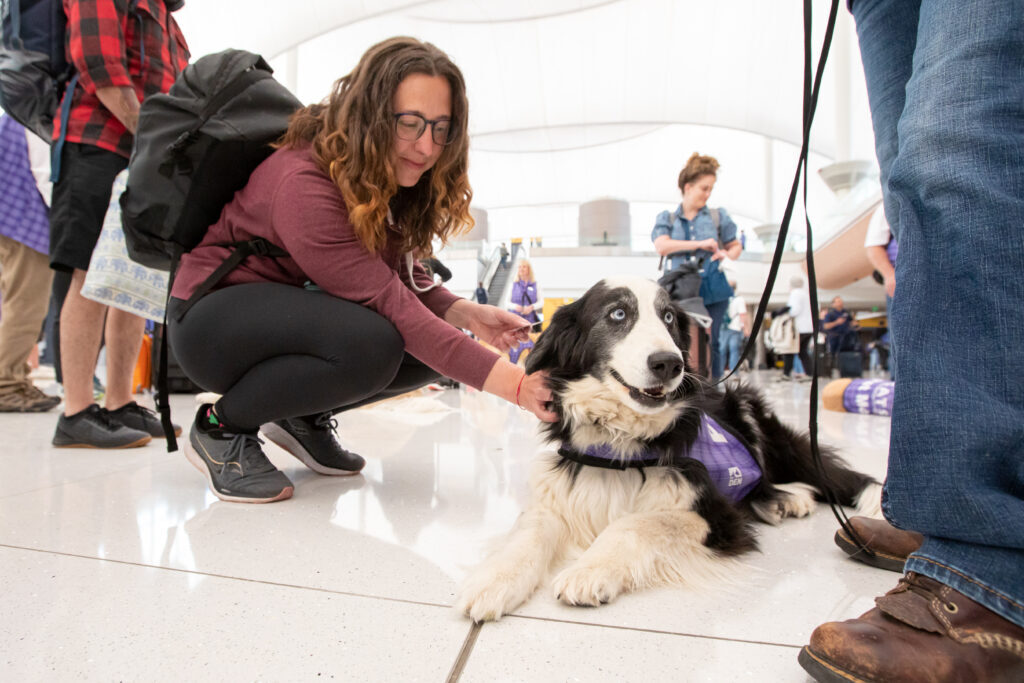
Words by Tess Becker
The airport can be an incredibly stressful place. Trying to keep pace with your takeoff time, making sure you’re prepared for your travels, and maybe wrangling in young children overwhelmed by everything happening around them.
To alleviate that stress, some airports have taken to having therapy animal units roam the halls of the airport to provide flyers some reprieve. The Denver International Airport just happens to hold the record for the largest airport therapy animal program in the world called the CATS (Canine Airport Therapy Squad) ironically.
“Animals reduce stress, that's been proven by studies over the years,” Karla Grahn, the Denver Airport Volunteer manager tells Smiley News.
“Airports are pretty stressful places. People are traveling for hundreds of reasons. It could be happy, it could be sad. And we all know that sometimes getting from the terminal to the concourse can be stressful. So providing that surprise and delight and those therapy animals to just expand that experience and make it really welcoming out in the concourses is kind of the goal, what we shoot for.”
According to OAG, a travel analytics organization, the Denver Airport is the fifth busiest airport in the world, with about 3.7 million people coming through the airport each year. Known for endless conspiracies around the art displayed or how and why the airport was built, the place is full of intrigue and interest, leading directly into such a large therapy animal program.

To add to the appeal, each of the airport’s 87 animals (86 dogs and one cat) has personalized trading cards with a professional headshot, what year they join, social media, and some facts about them. According to Karla, the cards end up being incredibly collectible among the staff of the airport.
Even though they already hold the record for their animal program, the airport is still far short of its peak, which was cut when Covid-19 hit its peak.
“At our height, we had 120,” Karla says. “During the pandemic, we lost a lot because we had to suspend our program for about 15 months.
“But we continue to grow we continue to ask for more teams onboard more teams, or almost a 24/7 365-day operation and three concourses and a terminal, and we only have 86 teams and most people are like ‘oh we've never seen them.’”
With that in mind, they’re always taking in new volunteers, with the goal of having a minimum of three animals each for a few hours a day.
As far as the visits are concerned it's up to the volunteers handling the animals to decide the plan of action and travel. The visit is announced on Twitter, and depending on the reaction of the people in the airport the dog may not make it more than 20 feet before being swarmed with love and affection from passersby.

Now, as they continue to expand their own program, other airports have reached out for advice on how to start their own programs.
“There are over 50 airports in the nation that currently host therapy and meal programs,” Karla says. “We get contacted quite frequently by airports looking to start this type of a program.”
This article aligns with the UN SDG Good Health and Wellbeing.